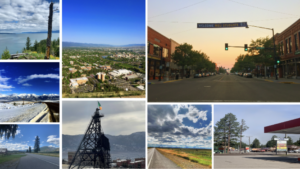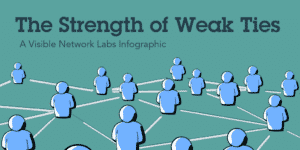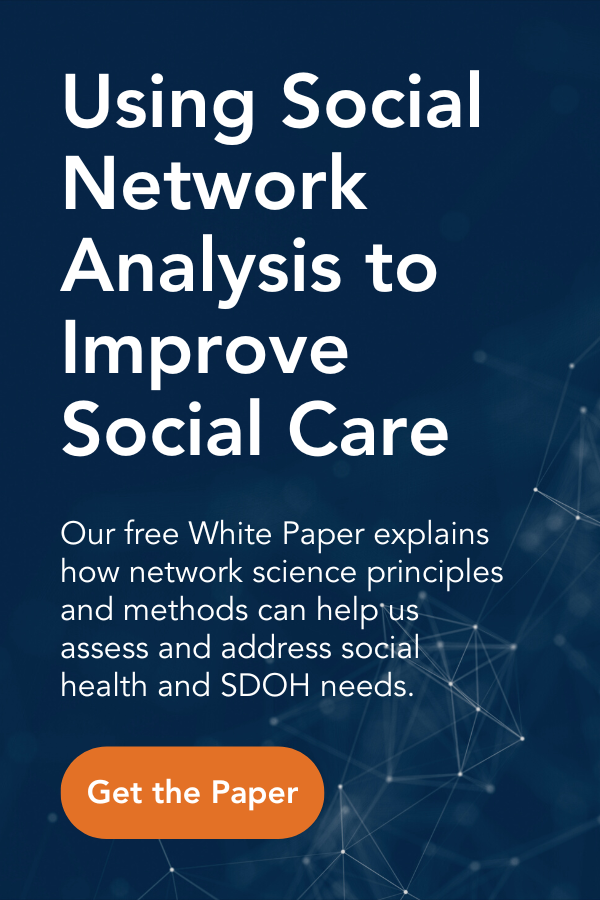Rural Healthcare Delivery

Dr. Rose Y. Hardy
Network Data Scientist
I wanted to talk a little about why I think rural healthcare delivery is important, and why it matters to me. This is my hometown, Missoula, Montana.
 Growing up, my dad was the only pediatric cardiologist for western Montana. Western Montana is about the size of New York state but with less than half the population of Manhattan.
Growing up, my dad was the only pediatric cardiologist for western Montana. Western Montana is about the size of New York state but with less than half the population of Manhattan.
So I witnessed firsthand the limited access to pediatric specialty care that many across Montana experience. Worrying about your child’s heart can already be a scary experience. Then, add on the limited access to your trusted healthcare providers, and having to plan each visit carefully. It can be stressful for any family.
I’ve watched my dad take phone calls to check on families while on vacation, and the close bonds that he created with primary care providers that he trusted to know the day-to-day needs of families that he cared for.

You may have to travel several hours to a hospital. Icy roads can delay planned healthcare visits, and not all the healthcare services you may need may be within the state. There may be a shortage of needed healthcare providers, and unreliable broadband services can limit your contact with the healthcare providers you do have.
As beautiful and expansive as the land can be, it can also be isolating and mean less social and emotional support for families.
It is with these experiences that I come to health services research and thinking – about rural healthcare delivery, and the social determinants of health that impact the care that those in rural communities face.
No two communities are exactly the same, and rural in one part of the United States may look very different than it does in another. It’s part of what makes understanding health care delivery complex and fulfilling. Understanding the community and its characteristics is vital to improving the health of the population and improving healthcare access.
In rural communities we often find that the demographics of rural communities differs from urban ones and that care use and behaviors can be different. For example, we have seen lower preventive care use, higher emergency care use, higher suicide rates, and lower quality of life perceptions particularly among those with complex and chronic health needs.
 Some of the research I’ve done in Ohio looked at these urban and rural differences in healthcare use among children and their families.
Some of the research I’ve done in Ohio looked at these urban and rural differences in healthcare use among children and their families.
There is a sense that the use of home health care, having healthcare services and providers in the home, can ease the burden that families face, particularly those with complex or chronic healthcare needs. We’ve seen that it can decrease caregiver burden, as well as decrease emergent care use and shorten lengths of hospitalizations.
Because of these differences, we looked at home health use among children with disabilities on Medicaid in central and south-central Ohio.
We see that between 2010 and 2019, home health visits among Medicaid children with disabilities who live in urban communities increased substantially, while it was much lower and more stable among those living in small and large rural communities.
And as we look more closely at the services they receive; we find that what has truly grown is the use of home health aides in urban communities. The use of skilled nursing services has been used much less during this same time.
This made us curious about the other types of healthcare use in these communities. One might expect that with the increase of home health services in urban communities that we might then see less emergency care use or fewer hospitalizations in these communities as well. But in fact, we see very similar rates of emergency care use and hospitalizations in both urban and rural communities.
So, what does that mean?
We have findings that show significant differences in rural and urban home health use, without major differences in their other types of care. It can be difficult to know what that means, or what aspect of the results to focus on. For example, one could say that even though there are the big differences in home health use, kids are apparently getting all the care they need because emergency care use isn’t increasing.
But having lived in Montana and having seen those in rural communities access care, I can say, at least anecdotally, that quality care isn’t just about reducing emergency care use or healthcare costs.
Easing caregiver burden, ensuring that families don’t have to take time off work to get to a healthcare provider, and achieving patient or family-centered care goals can also be incredibly important. But they certainly aren’t always things that we can visualize in the data we have access to.
What are some of the potential explanations for these findings?
Well, it could be that home health use is over used in urban communities; it could be that the specialized home health services that kids need aren’t the ones they’re receiving; or it could be that the measures of successful home health care here can’t be measured in the data we have. It could be that educational outcomes or quality of life outcomes may shed more light onto how home health use can benefit families caring for children with complex and chronic health needs.
We heard from home health agencies that reimbursement and lack of specialized training are barriers that they face when providing pediatric home health. And in terms of the expansion of home health services in rural communities — besides limited funding, things like creating a safe work environment and family perceptions of home health services are identified barriers.
In some of my other work, I’ve seen that distance to care is not always the most important factor for primary care providers referring to specialty care.
Ensuring that their patients receive the care that they need from providers who understand and listen to them was often more important. Those in rural communities are often used to driving long distances; when the need is great enough they’ll travel whatever distance is necessary.
The increases in social isolation and loneliness, in addition to worsening mental health across the country during the pandemic has had impacts on rural communities that were already facing challenges. These areas were already experiencing hospital closures before the pandemic, so the stresses on the healthcare system in rural communities is another area of concern.
That said, there are many wonderful things about rural communities and strengths of these communities that can help address some of the challenges that we see.
Patients may have close relationships with their providers, see them in the community regularly, and as a result have strong and trusting provider relationships. Those providing specialty care, like my dad, can often have important and close relationships with primary care providers that may not always exist in urban communities.
The limited services can lead to greater dependence on each other, and may spark new and innovative solutions to care provision — solutions that may not have been readily apparent when everyone worked in silos.
And finally, as is the case in urban communities, addressing the social determinants of health that most impact a community will be vital to improving population health outcomes.
Addressing the housing crisis, increasing access to broadband services, and increasing the rural health training that medical and nursing students receive can all contribute to the provision of quality care in rural communities.
As we continue to improve the care provided to families across the country, the characteristics of communities that contribute to these health outcomes should be kept in mind as we plan and improve care delivery.
It is my hope that families across the country, regardless of the community in which they live, can receive the care that they require to thrive in their chosen community. How exactly those services are provided likely will differ across communities, but their health and well-being should not.
Be sure to stay tuned to our Visible Us Blog for more product updates and VNL Team content!
About the Author: Dr. Rose Y. Hardy
Dr. Rose Y. Hardy is a health services researcher with expertise in network science, social determinants of health, and child health. She received her PhD in health services research from the Colorado School of Public Health and her master’s in public health from Brown University. Her postdoctoral training at Nationwide Children’s Hospital focused on social determinants of health and care within a pediatric Medicaid Accountable Care Organization.
|
|
Thank you for Signing Up |

More Social Care Resources








